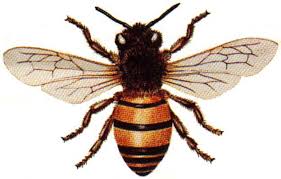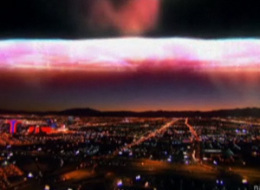 Disease-carrying honeybees imported from Australia may be responsible for a mysterious disorder that's decimated bee hives around the country, and federal regulators say they'd consider import restrictions if necessary.
Disease-carrying honeybees imported from Australia may be responsible for a mysterious disorder that's decimated bee hives around the country, and federal regulators say they'd consider import restrictions if necessary.
By some estimates, beekeepers in the past several years have lost from a third to half their hives to what's called colony collapse disorder. Each hive, or colony, can contain as many as 100,000 bees. The bees are disappearing from the hives never to be seen again.
Are Australian honeybees behind U.S. hive collapse?
Human race 'will be extinct within 100 years', claims leading scientist
 As the scientist who helped eradicate smallpox he certainly know a thing or two about extinction.
As the scientist who helped eradicate smallpox he certainly know a thing or two about extinction.
And now Professor Frank Fenner, emeritus professor of microbiology at the Australian National University, has predicted that the human race will be extinct within the next 100 years.
He has claimed that the human race will be unable to survive a population explosion and 'unbridled consumption.’
Electronic Armageddon: the EMP Bomb
 An electromagnetic pulse, or EMP, bomb is a bomb that’s designed to go above the atmosphere and release huge amounts of energy. In less than a billionth of a second, the electrical intensity on Earth’s surface would become so hot that microchips would fry, power lines would overload and the electric grid would collapse.
An electromagnetic pulse, or EMP, bomb is a bomb that’s designed to go above the atmosphere and release huge amounts of energy. In less than a billionth of a second, the electrical intensity on Earth’s surface would become so hot that microchips would fry, power lines would overload and the electric grid would collapse.
Everything with microelectronics in it would stop: your car, your computer, the subway. There would be no electricity.
Titan: Nasa scientists discover evidence 'that alien life exists on Saturn's moon'
 Researchers at the space agency believe they have discovered vital clues that appeared to indicate that primitive aliens could be living on the planet.
Researchers at the space agency believe they have discovered vital clues that appeared to indicate that primitive aliens could be living on the planet.
They have discovered that life forms have been breathing in the planet’s atmosphere and also feeding on its surface’s fuel.
Astronomer Copernicus reburied as hero
 Nicolaus Copernicus, the 16th-century astronomer whose findings were condemned by the Roman Catholic Church as heretical, was reburied by Polish priests as a hero on Saturday, nearly 500 years after he was laid to rest in an unmarked grave.
Nicolaus Copernicus, the 16th-century astronomer whose findings were condemned by the Roman Catholic Church as heretical, was reburied by Polish priests as a hero on Saturday, nearly 500 years after he was laid to rest in an unmarked grave.
His burial in a tomb in the cathedral where he once served as a church canon and doctor indicates how far the church has come in making peace with the scientist whose revolutionary theory that the Earth revolves around the Sun helped usher in the modern scientific age.
Stephen Hawking warns over making contact with aliens
 Aliens almost certainly exist but humans should avoid making contact, Professor Stephen Hawking has warned. In a series for the Discovery Channel the renowned astrophysicist said it was "perfectly rational" to assume intelligent life exists elsewhere.
Aliens almost certainly exist but humans should avoid making contact, Professor Stephen Hawking has warned. In a series for the Discovery Channel the renowned astrophysicist said it was "perfectly rational" to assume intelligent life exists elsewhere.
Microbes galore in seas; "spaghetti" mats Pacific
The ocean depths are home to myriad species of microbes, mostly hard to see but including spaghetti-like bacteria that form whitish mats the size of Greece on the floor of the Pacific.
The survey, part of a 10-year Census of Marine Life, turned up hosts of unknown microbes, tiny zooplankton, crustaceans, worms, burrowers and larvae, some of them looking like extras in a science fiction movie and underpinning all life in the seas.
More Articles...
Page 49 of 61

 Science Glance
Science Glance






























